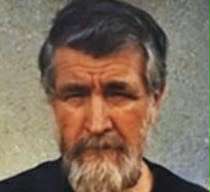
b: 1944
Raymond Edmunds
Summary
Name:
Nickname:
Mr. Stinky / Donvale RapistYears Active:
1966Birth:
March 12, 1944Status:
ImprisonedClass:
MurdererVictims:
2+Method:
Shooting / BludgeoningNationality:
Australia
b: 1944
Raymond Edmunds
Summary: Murderer
Name:
Raymond EdmundsNickname:
Mr. Stinky / Donvale RapistStatus:
ImprisonedVictims:
2+Method:
Shooting / BludgeoningNationality:
AustraliaBirth:
March 12, 1944Years Active:
1966bio
Raymond Edmunds, later infamously dubbed “Mr. Stinky” due to his overpowering body odour, was an unassuming and largely unknown figure prior to his high-profile arrests. His early life has remained mostly private, with little documentation available in the public record regarding his upbringing, education, or employment history, beyond general assumptions that he worked in manual labor or odd jobs.
Living in Victoria and occasionally crossing into New South Wales, Edmunds had no formal criminal record until much later in life, though it has been alleged he led a secret, violent existence spanning decades. He managed to evade detection throughout the 1970s and early 1980s despite a disturbing trail of rapes and suspected homicides. One crucial loophole that helped him avoid identification for years was the lack of mandatory fingerprinting in Victoria, unlike New South Wales.
He presented publicly as a relatively ordinary man. However, beneath this facade lay a calculated and predatory offender who targeted young women across regional Victoria. Edmunds is believed by some investigators and journalists to be one of Australia’s most prolific serial sex offenders.
murder story
On the evening of February 10, 1966, two teenagers — 18-year-old Garry Heywood, a panel beater, and 16-year-old Abina Madill — attended a rock concert at the Shepparton Civic Centre in Victoria, Australia. Both had gone with separate groups of friends, but neither returned home that night. In the days following their disappearance, police began a missing persons investigation, which quickly escalated in urgency.
A grim discovery was made a few days later when two 17-year-olds, out on a shooting trip near Murchison East, stumbled upon a partially decomposed body — that of Abina Madill. Not long after, about 200 meters from where Madill was found, the remains of Garry Heywood were located. Forensic examination determined that Heywood had been killed by a .22-calibre Mossberg self-loading rifle shot through the head. Madill, by contrast, had suffered rape and bludgeoning injuries, indicating a much more violent and personal method of murder.
The brutality of the crimes, paired with their seemingly random nature, sent shockwaves through the community. Yet for nearly two decades, the murders remained unsolved. The investigation stalled, largely due to the lack of witness accounts, forensic DNA capability at the time, and the absence of mandatory fingerprinting in Victoria.
A breakthrough finally came in March 1985, nearly 19 years after the murders, when Raymond Edmunds was arrested in Albury, New South Wales, for an unrelated incident: indecent exposure while parked in his station wagon. Although the offense was minor — he pleaded guilty, was fined $400, and released — the arrest proved pivotal. As part of New South Wales procedure, Edmunds’ fingerprints were collected and entered into the criminal database. Those prints matched fingerprints left at the 1966 Shepparton double homicide scene.
This discovery led to his immediate connection with the unsolved murders of Heywood and Madill. Forensic evidence and physical linkage secured his indictment. In 1986, Edmunds was convicted of both murders and sentenced to two life sentences with no minimum term.
Following his conviction, further investigations revealed a far more disturbing pattern. Edmunds had a history of sexual violence and was eventually convicted of five additional rapes, which earned him a cumulative 30-year sentence on top of his life terms. The rape incidents occurred in areas such as Greensborough and Donvale, all involving young female victims.
Police have long believed that Edmunds' criminal history extended well beyond the known cases. Investigators suspect him in more than 32 rapes and possibly additional unsolved murders. One of the most prominent cases in which he was a suspect was the disappearance of Eloise Worledge, a young girl who vanished from her Beaumaris home in 1976. Though Edmunds was never formally charged in that case, his proximity, behavioral profile, and history made him a strong person of interest.
To further investigate unsolved crimes tied to him, police invoked new legislation that allowed authorities to compel convicted offenders to provide DNA samples, hoping to finally match Edmunds to other crime scenes using modern forensic technology.
As of the most recent updates, Raymond Edmunds remains incarcerated, serving multiple life sentences. His case remains one of Australia’s most disturbing examples of how minor arrests — when paired with improved forensics and legal procedure — can finally bring long-evaded criminals to justice.